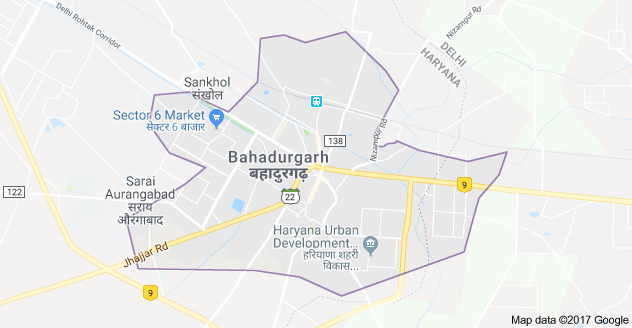
BAHADURGARH, India— Wearing nothing but loincloths, a group of boys warm up by climbing sturdy ropes that take them high into the trees. One teenager walks around the wrestling pit swirling incense, blessing the arena and preparing it for battle.
On this November evening, as the dusk thickens and the bugs venture out, a couple of dozen young devotees of kushti, the ancient Indian style of wrestling, have gathered to face off. They range in age from 10 to 16. The earth in the pit has been prepared as it has been for centuries, turned over and mixed with sawdust, turmeric and ghee, or clarified butter. It’s mildly fragrant and soft to the touch, making it easier on the wrestlers’ skin.
These devotees, or pehelwans, have made a commitment that extends beyond the hours they spend practicing each morning and evening. They live an ascetic lifestyle, eating specific foods like almond milkshakes and chapattis slathered with ghee. They don’t eat meat and refrain from smoking, drinking and dating.
The sport, thought to be 2,000 years old, is mentioned in ancient Hindu texts and depicted in temple carvings. Although women wrestlers have made strides recently in India, the vast majority of participants are men.
But like many traditions in a country that’s rapidly modernizing, kushti wrestling faces the threat of being left behind. It remains popular in states like Haryana, where these pehelwans are training. For many poor families, wrestling provides a glimmer of hope. Those who succeed can earn money, respect in their communities and even particular jobs. They’re often employed by the police force or India’s railways.
Fifteen-year-old Ankur Bharadwaj says it’s his dream to win an Olympic medal, like his idol Sushil Kumar, who has won two Olympic medals for India in freestyle wrestling. Bharadwag says he gets up at 4 a.m. and jogs to the wrestling pit before going to school.
“Hard work makes a man perfect,” he says. “That’s why we are practicing so regularly. There are no breaks if you want to be a wrestler.”
Inside the pit, Bharadwaj and the other wrestlers rub their hands with the earth and toss it over their bodies. Under the watchful eye of their coach, they lock arms with their opponents, lunging for their legs as they try to flip them onto their backs and into submission.
The boys aspire to be accepted into an akhada, a kind of wrestling hostel where they’re given a bed and can devote themselves to the sport fulltime if they choose. Akhadas come with shrines to the Hindu god Hanuman, who is seen as a kind of patron saint to the sport.
At dawn at a small akhada in the suburbs of Delhi, a man circles the arena dragging a thick piece of wood to smooth the earth. Another crushes almonds with a large mortar and pestle. A poster on the gate advertises a local wrestling bout with a first-place prize of about $3,000. The gate swings open and a cow noses its way inside, breaking into a trot when the wrestlers try to shoo it away.
Coach Hemand Kumar, 35, says wrestling has always been his passion. Even before he started at age 10, he would get up before dawn and watch his father wrestle. The boys who take it up are saved from “the nonsense” of the streets, he says. But he worries about the sport’s future in a country with a rapidly rising middle class.
“The rich kids, they don’t want to do it,” he says. “Those people who don’t have the money, they’re interested. But they don’t have the resources.”
Jai Prakash, a former Olympic wrestler who is president of the Delhi Amateur Wrestling Association, says it’s getting more difficult to find the land needed to set up new akhadas. And unlike the nation’s most popular sport of cricket, he says, it’s tough to find sponsors for kushti.
“Wrestling bouts in villages used to be like the festival season, with a joyous mood and crowds celebrating victories of their favourite wrestlers,” he says.
Still, he’s upbeat about the future of the sport, which is also known as pehlwani. He says wrestling authorities want to make kushti a part of some internationalwrestling competitions, something he hopes might begin next year.
At the renowned Guru Hanuman Akhara in Delhi there are about 25 resident pehelwans, most of them hulking men in their 20s and early 30s. Some train with giant clubs that they swing behind their backs. Others grab a rope that’s threaded through a pulley and haul into the air a bucket that’s filled with concrete.
Sitting in a chair watching the men practice is Naveen Mor, who has won a number of international wrestling fixtures, including a gold medal at the 2011 World Police and Fire Games in New York. He says his wrestling prowess helped him land a job with the Haryana state police, where he works as an inspector.
Like many Indian wrestlers, Mor started in the pit and later became proficient wrestling on a mat, which provides the standard arena for most international bouts.
He says his first love remains the pit, where bouts can sometimes last an hour until somebody finally gives up.
As he cuts back on competitions and does more coaching, Mor says he still follows the strict dietary rules of kushti, although he is more relaxed about other rules and has recently gotten married.
He says he doesn’t regret dedicating his youth to the sport.
“No working. No shopping,” he says with a grin. “Only wrestling, wrestling, wrestling. My life is wrestling. I love wrestling.”